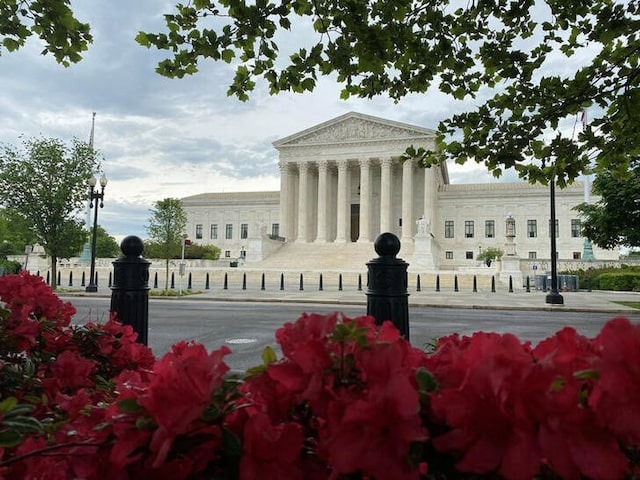In a landmark case that has captured the attention of the legal and business communities, the U.S. Supreme Court is currently scrutinizing the intricacies of a massive $2.7 billion antitrust settlement between Blue Cross Blue Shield and over 100 million of its subscribers. Central to this review is the contentious $667 million in attorney fees awarded as part of the settlement, which has sparked debate over the appropriate compensation for legal representatives in large class action lawsuits.
The origins of this case trace back over a decade, culminating in a class action lawsuit that accused the Blue Cross Blue Shield Association and several of its affiliates of engaging in anti-competitive practices. The plaintiffs argued that these practices restricted competition among insurers and artificially inflated premiums for millions of Americans. Despite denying wrongdoing, Blue Cross settled the allegations in an Alabama federal court, aiming to avoid the uncertainties of prolonged litigation.
As the Supreme Court hears arguments, the focus has sharpened on the method used to calculate the attorney fees. The objector to the settlement has challenged the $667 million fee as exorbitant, advocating instead for a $194 million fee based on the “lodestar” calculation. This traditional method multiplies the hours worked by a standard hourly rate, often considered more reflective of the actual effort expended by attorneys.
However, the attorneys representing the class of Blue Cross subscribers defend the fee, which constitutes about 23.47% of the total settlement fund. They argue that this percentage falls within the “range of reasonableness” typically recognized in class action settlements, varying between 20% and 25%. They contend that their “percentage of the fund” method aligns the lawyers’ interests with those of the class members, incentivizing them to maximize the settlement amount.
During the proceedings, the class attorneys emphasized the trial judge’s rigorous scrutiny in awarding the fees. They refuted claims of a “rubberstamp” approval, detailing the judge’s comprehensive analysis of the fee request. This fee calculation and approval method is crucial, as it impacts not only the direct stakeholders but also sets a precedent for future class action settlements.
The case, known formally as Home Depot v. Blue Cross Blue Shield Association, alongside a related appeal, David G. Behenna v. Blue Cross Blue Shield Association, encapsulates significant legal and ethical questions. It tests the boundaries of judicial discretion in overseeing settlements and the fairness in compensating lawyers who take on enormously complex and risky litigation on behalf of large groups.
Legal experts highlight that the Supreme Court’s decision could redefine the standards for attorney fees in class action lawsuits nationwide. A ruling that adjusts the percentage allowed could reshape the economics of class litigation, potentially affecting how attorneys are motivated to represent large groups against powerful defendants.
Consumer rights advocates are closely monitoring the outcome, as it will influence the financial health of the insurance market and possibly the cost of premiums for millions of Americans. The implications extend beyond the immediate parties and resonate through sectors that rely on class action mechanisms to resolve disputes and address grievances.
The debate also touches on broader themes of justice and equity. Proponents of the higher fee argue that the complexity and duration of the case justify the substantial reward, pointing out that the attorneys took significant risks by fronting costs with no guarantee of success. Critics, however, worry that such hefty fees deplete funds that could otherwise benefit class members more directly.
As the justices deliberate, they must balance these competing interests: ensuring fair compensation for legal work while safeguarding the principle that settlements should primarily benefit the plaintiffs, not their attorneys. Given the inherently collective nature of class actions, this balance is delicate, where individual members might feel detached from the decision-making process.
Moreover, the Supreme Court’s review occurs against the backdrop of an increasingly contentious debate over the role of antitrust law in regulating corporate America. With antitrust scrutiny intensifying under the current administration, the Court’s decisions are poised to influence how aggressively future administrations can pursue similar cases against large conglomerates.
The legal battle also sheds light on the evolving landscape of the U.S. healthcare system, where insurance providers play a pivotal role. The outcome could send a strong message about the limits of acceptable corporate behavior in a sector that affects the life of nearly every American.
As the nation awaits the Supreme Court’s verdict, the case underscores the complex interplay between law, economics, and societal values. Whatever the decision, it will likely be seen not just as a conclusion to a legal dispute but as a statement on the ethical dimensions of legal and corporate responsibility in America.
The stakes are high, and the implications are profound. This case affects those directly involved and sets the tone for future legal confrontations across various sectors. As such, it remains one of the most closely watched legal dramas of the year, a defining moment that may reshape the contours of American antitrust law and the ethical landscape of class action litigation.










